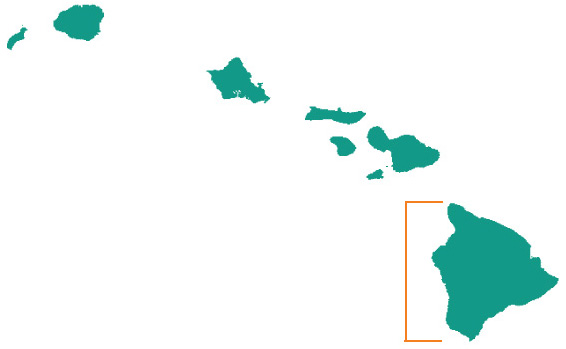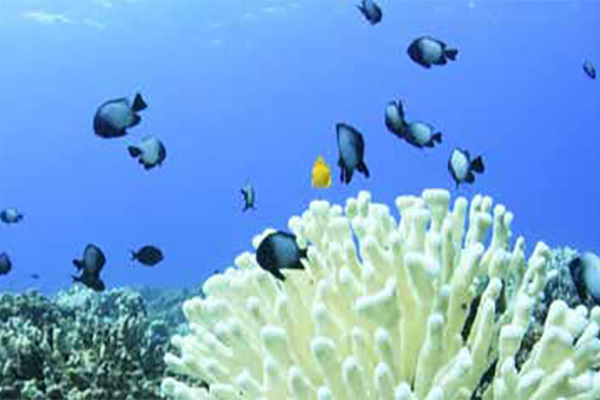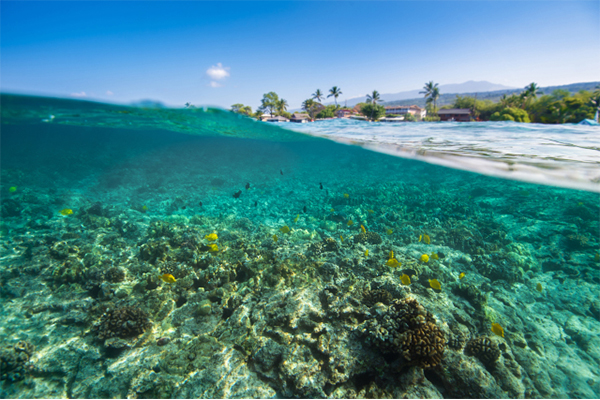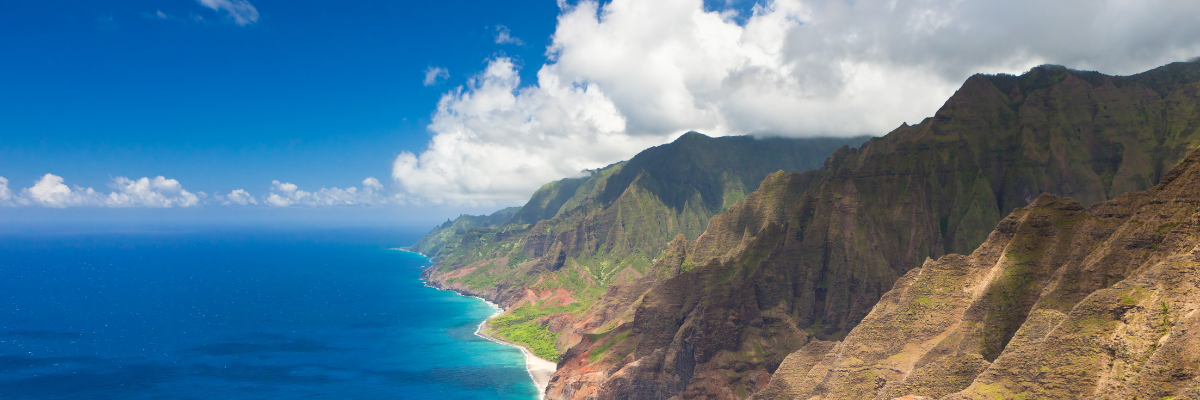West Hawai‘i is home to a dynamic and productive marine ecosystem. Economic and socio-cultural value is provided to residents through numerous ecosystem services, such as commercial and non-commercial fishing, cultural and traditional practices, recreation, tourism, and coastal protection. However, ecological communities across West Hawai‘i—particularly, coral reefs—have suffered recent and unprecedented declines. Marine ecosystem degradation can compromise underlying ecosystem functions and processes and undermine the numerous goods, services, and benefits upon which local communities depend.
The 2019 West Hawai'i Ecosystem Status Report summarizes a suite of ecosystem indicators that track the status of the region’s marine ecosystem. Ecosystem indicators include climate and oceanic drivers of ecosystem change, the states of ecological communities, and the activities and relationships between people and marine resources in West Hawai‘i. Ecosystem indicators were identified through a collaborative and participatory process led by the West Hawai‘i Integrated Ecosystem Assessment, a NOAA program dedicated to providing robust scientific information that meets current and future marine management needs in the region.

 Tourism represents the single largest source of economic activity in West Hawai‘i. Annual visitor arrivals recently exceeded 1.3 million, injecting over $2.1 billion into the local economy.
Tourism represents the single largest source of economic activity in West Hawai‘i. Annual visitor arrivals recently exceeded 1.3 million, injecting over $2.1 billion into the local economy. All reef fish indicators (e.g., total fish biomass and fish abundance) were higher in Marine Protected Areas compared with fished areas, suggesting a benefit of fisheries management on coral reef fish communities in protected areas.
All reef fish indicators (e.g., total fish biomass and fish abundance) were higher in Marine Protected Areas compared with fished areas, suggesting a benefit of fisheries management on coral reef fish communities in protected areas.Why was 2015 so hot?

In 2015 the ocean was hot. Sea surface temperatures reached 2.5°C (4.5°F) above typical summertime temperatures and resulted in the first widespread coral bleaching event in West Hawai‘i. The overall severity of bleaching, or the percentage of corals bleached at a given location, ranged from 30–80% with some geographic areas exhibiting upwards of 90% coral bleaching. Coral bleaching does not necessarily result in coral mortality; however, local human pressures such as excess nutrient input and removal of herbivores fishes can imped their ability to recover. Effective management strategies that mitigate human-related pressures can promote coral recovery and increase the resiliency of corals to future coral bleaching events.
Many other indicators tell the full story of why 2015 was so hot.
Making the First Ecosystem Status Report
 The ocean off the west coast of Hawai‘i Island is home to an especially vibrant marine ecosystem. This coastal region is teeming with bright fish, sea urchins and shellfish, green sea turtles, spinner dolphins, whales, manta rays, and coral reefs. West Hawai‘i has the largest expanse of intact and actively growing coral reef in all of the main Hawaiian Islands [1]. This wide array of flora and fauna makes West Hawai‘i incredibly important for marine biodiversity but also particularly vulnerable to the pressures of an increasing human population, coastal development, fishing, pollution, and climate change.
The ocean off the west coast of Hawai‘i Island is home to an especially vibrant marine ecosystem. This coastal region is teeming with bright fish, sea urchins and shellfish, green sea turtles, spinner dolphins, whales, manta rays, and coral reefs. West Hawai‘i has the largest expanse of intact and actively growing coral reef in all of the main Hawaiian Islands [1]. This wide array of flora and fauna makes West Hawai‘i incredibly important for marine biodiversity but also particularly vulnerable to the pressures of an increasing human population, coastal development, fishing, pollution, and climate change.
